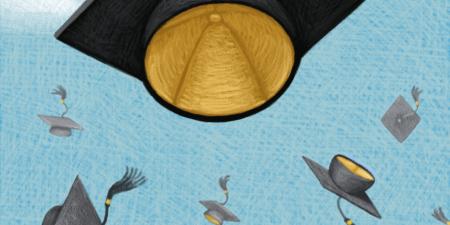The culture of medicine is an elusive concept; it can at once evoke images of benevolent men and women offering themselves in service of the sick and vulnerable and images of a patriarchal institution marred by elitism and the abuse of power. A complex interplay among the people in medicine, the institutions that train them, and the society within which both function contributes to these incongruous images. The culture of medicine is influenced by its rich history and the most recent trends in medical attitudes and practices. In order to portray adequately the discourse and norms surrounding the profession, we must take all of these elements into account. Perhaps one reason defining and discussing culture can be so challenging is that so much of what forms and sustains it is implicit. The culture of medicine is not only defined by what doctors do, say, feel, and think, but also by what they do not do, say, feel, or think. What one is expected to read between the lines, or to “pick up on,” without being explicitly told is very much a part of medical—indeed any—culture; the norms and expectations that lie just beneath the surface can be as influential as anything codified. Thus, there can be a disconnect between what the medical field purports to do and what actually happens on the wards or in the classroom.
For all these reasons, if we are to evaluate medical culture today we have to dig past our assumptions and question the status quo. As stewards of the profession we must first recognize that a distinct medical culture does in fact exist and that none of us are immune to its influence. Next, we ought to strive for awareness of what values inform this culture, so that we can more accurately and critically examine their influences on our actions and attitudes. This theme issue of the AMA Journal of Ethics strives to do just that, as we take a tour of issues surrounding the established norms and expectations in medicine.
This theme issue has a special focus on medical education, which is many professionals’ first introduction to medical culture. Even more fundamental, however, is the raw material upon which this education acts. We first look to the gates of the medical profession (and to its keepers), to answer the question of who gets into medical school and why. Three pieces deal with this topic.
Mark G. Kuczewski and Linda Brubaker discuss Loyola Stritch School of Medicine’s recent decision to consider applications from undocumented students of DACA (deferred action for childhood arrivals) immigration status. This administrative move highlights the important role institutions can play in fostering a spirit of inclusiveness in medical culture and in listening to and responding to the needs of the communities they serve. Kuczewski and Brubaker further expand on their endeavor to implement this policy in the podcast for this issue.
Marc J. Kahn’s and Ernest J. Sneed’s piece on promoting diversity in medicine argues that the rhetoric about the financial burden of applying to and attending medical school may dissuade people with lower socioeconomic status from pursuing careers in medicine. Finally, Stanley F. Wainapel investigates barriers for the applicant with a disability. He points out the ways in which medical schools lag behind other institutions when it comes to accommodating students or physicians with disabilities, thereby reinforcing a narrow, outdated definition of who can become a physician.
The term “hidden curriculum” has been used in sociology to describe dimensions of medical education that are not intended or explicit. Frederic W. Hafferty, Elizabeth H. Gaufberg, and Joseph F. O’Donnell discuss the role that fashionable “on doctoring” courses have in disseminating and responding to the hidden curriculum in medical education. Martha Peaslee Levine reflects on a journal article about the powerful influence physician-student relationships have on the next generation of doctors.
Thomas W. LeBlanc further examines medical education’s role in culture, critiquing the “see one, do one, teach one” philosophy. He expands the current debate about the ethics and effectiveness of this long-standing teaching strategy to how physicians learn to engage in difficult conversations with their patients. Brian Goldman argues that the slang used by medical residents reveals underlying attitudes and frustrations and urges us to use these observations to instigate dialogue about these issues instead of responding punitively.
A universally shared rite of passage in medicine is the process by which graduating medical students are “matched” with residency programs. In our law piece, Richard Weinmeyer takes us on the journey of a courageous group of physicians who sought to challenge the National Resident Matching Program in the case of Jung vs Association of American Medical Colleges.
Brandon Vaidyanathan probes medical culture more conceptually, giving us a sociological perspective on how professional cultures are communicated to new members. He explores the role of narrative scripts, imitation, and habituation in shaping and sustaining norms and values in medicine.
Finally, this month’s ethics cases highlight some issues physicians face throughout their education and the ways in which the culture of medicine influences the interpretations and responses therein. Amy Blair and Katherine Wasson explore the delicate balance between showing compassion and inappropriately expressing emotions with patients. Nathan E. Derhammer comments on the complexities of attempting to accommodate residents after the arrival of a child. And Amy H. Buchanan and Aaron J. Michelfelder discuss the seemingly contradictory values of physician independence and proper supervision in residency training, explaining that attending physicians can foster both ideals.
This issue of the AMA Journal of Ethics calls attention to some of the many ways in which society, people, and institutions interact to influence how we perceive and practice medicine. The scope of this theme issue is indicative of the breadth and complexity of the culture of medicine. It is an invitation to reflect more deeply on the origin of our values and the factors that sustain them so we can be certain that they are, in fact, the values we wish the medical profession to embody.



